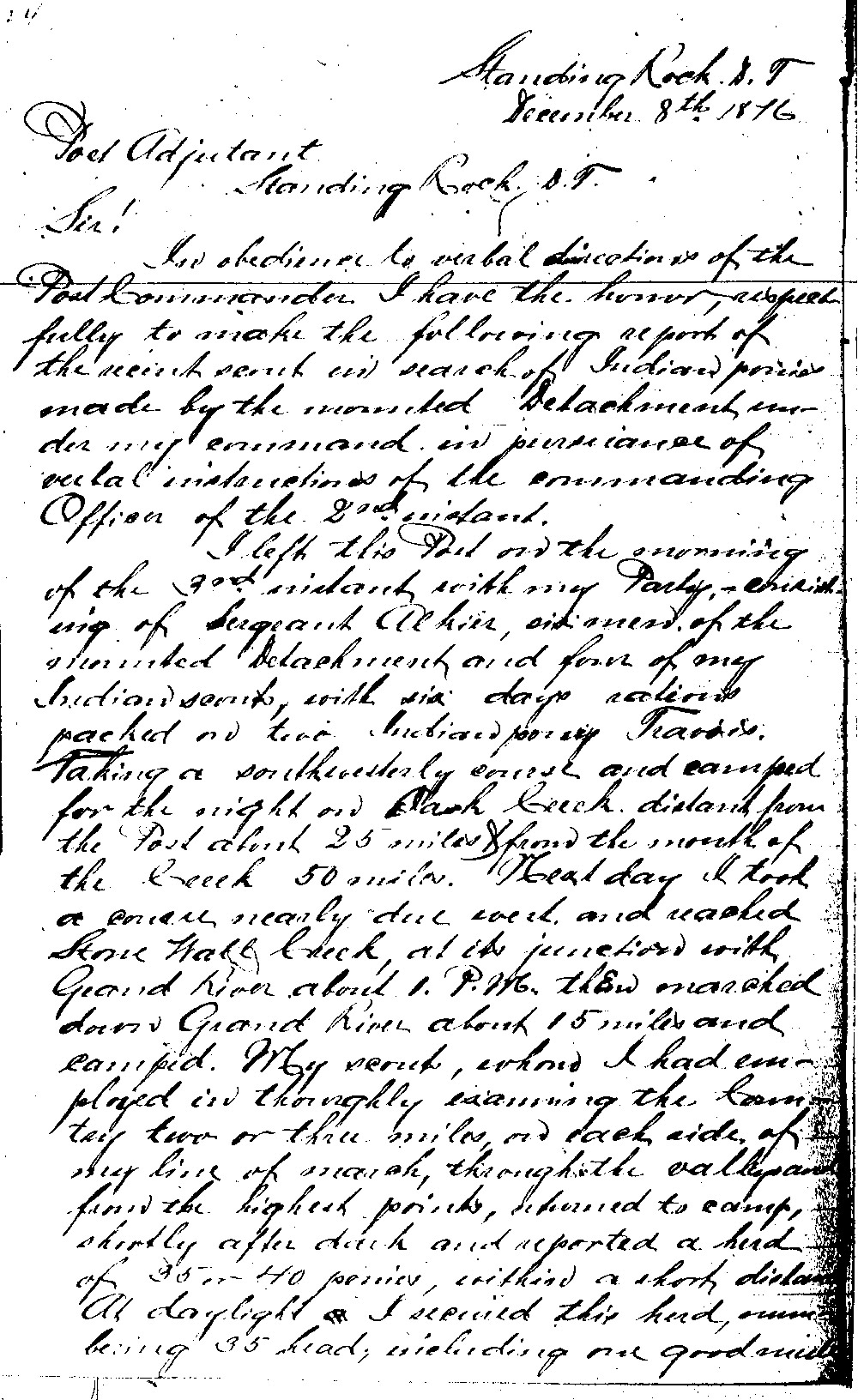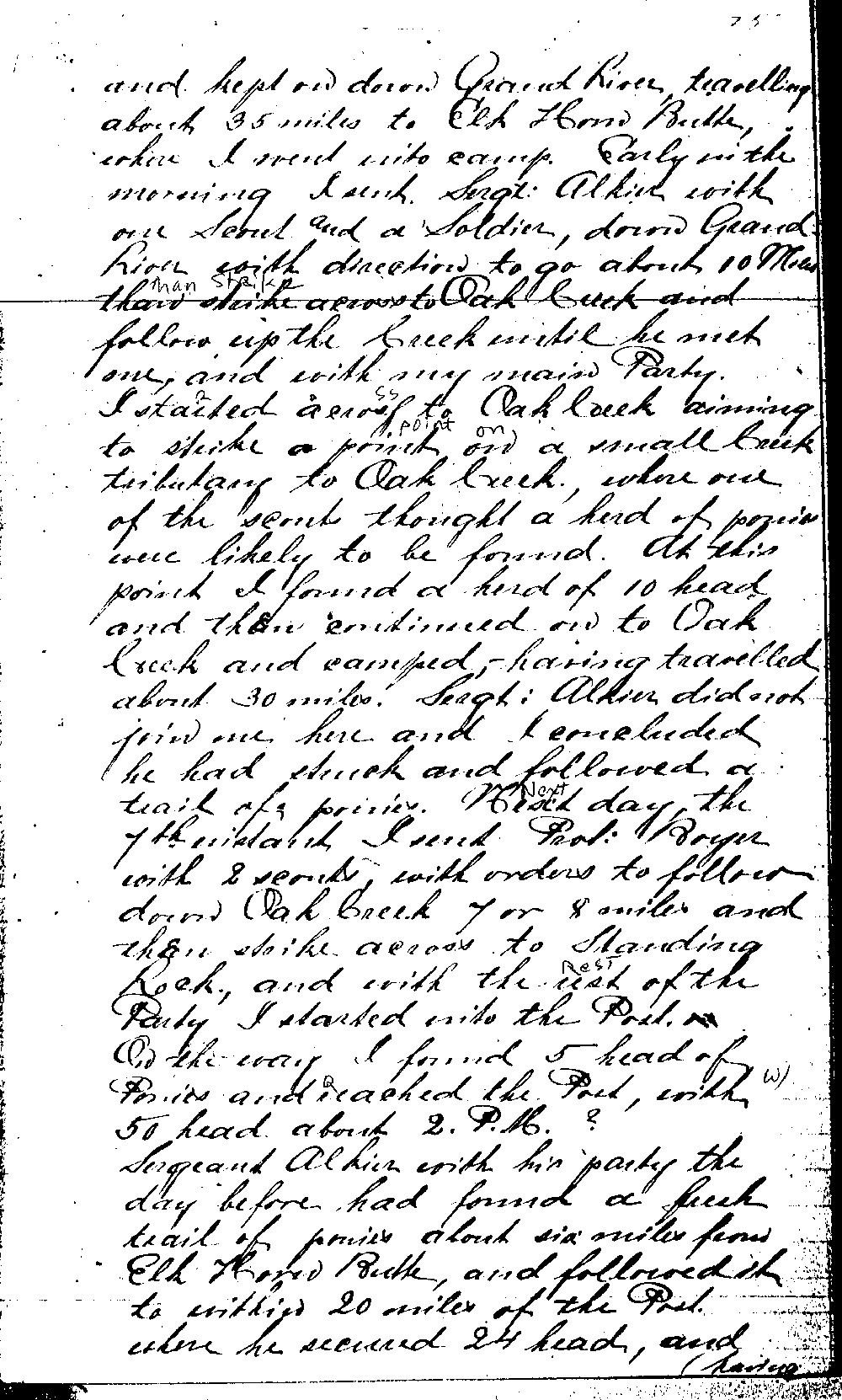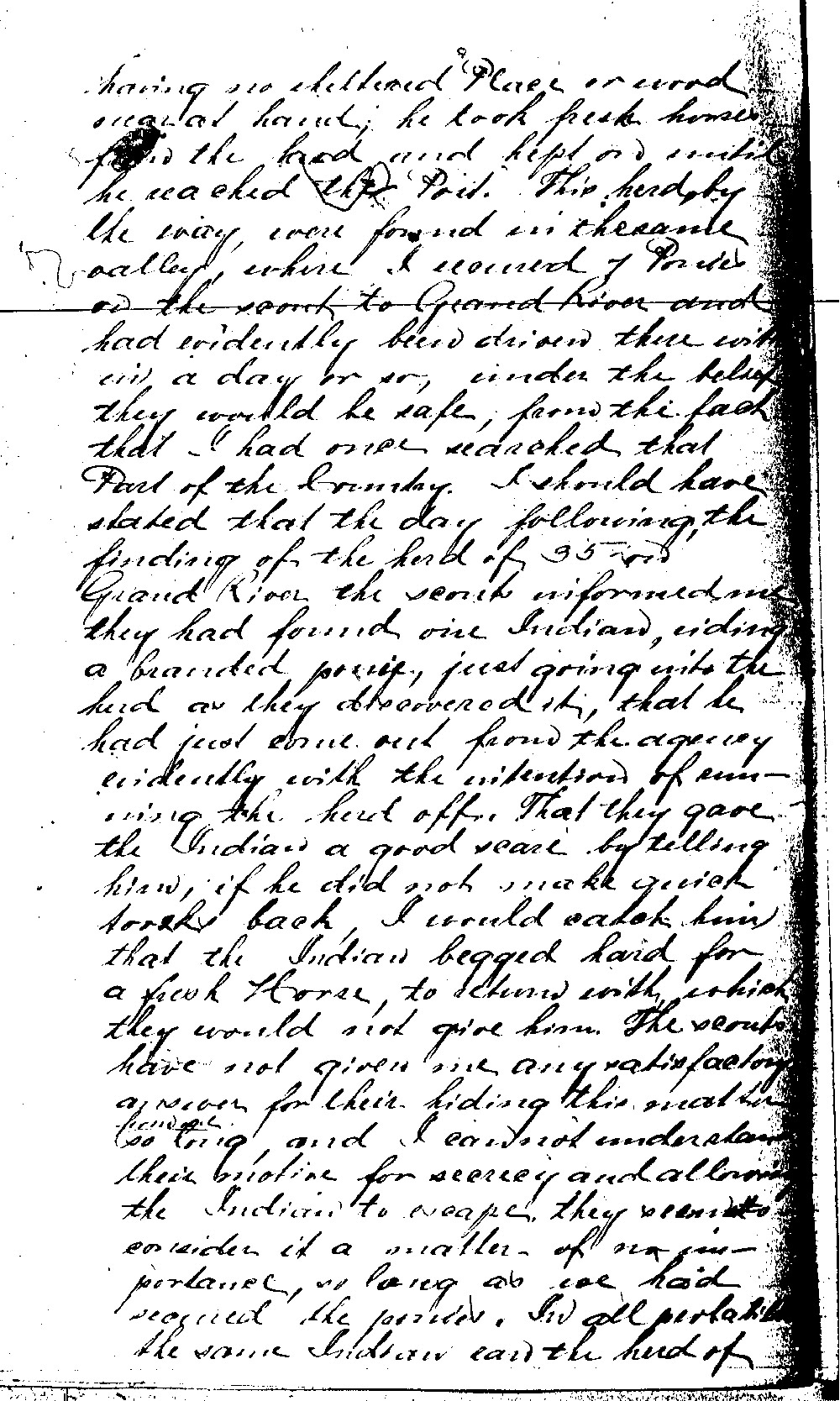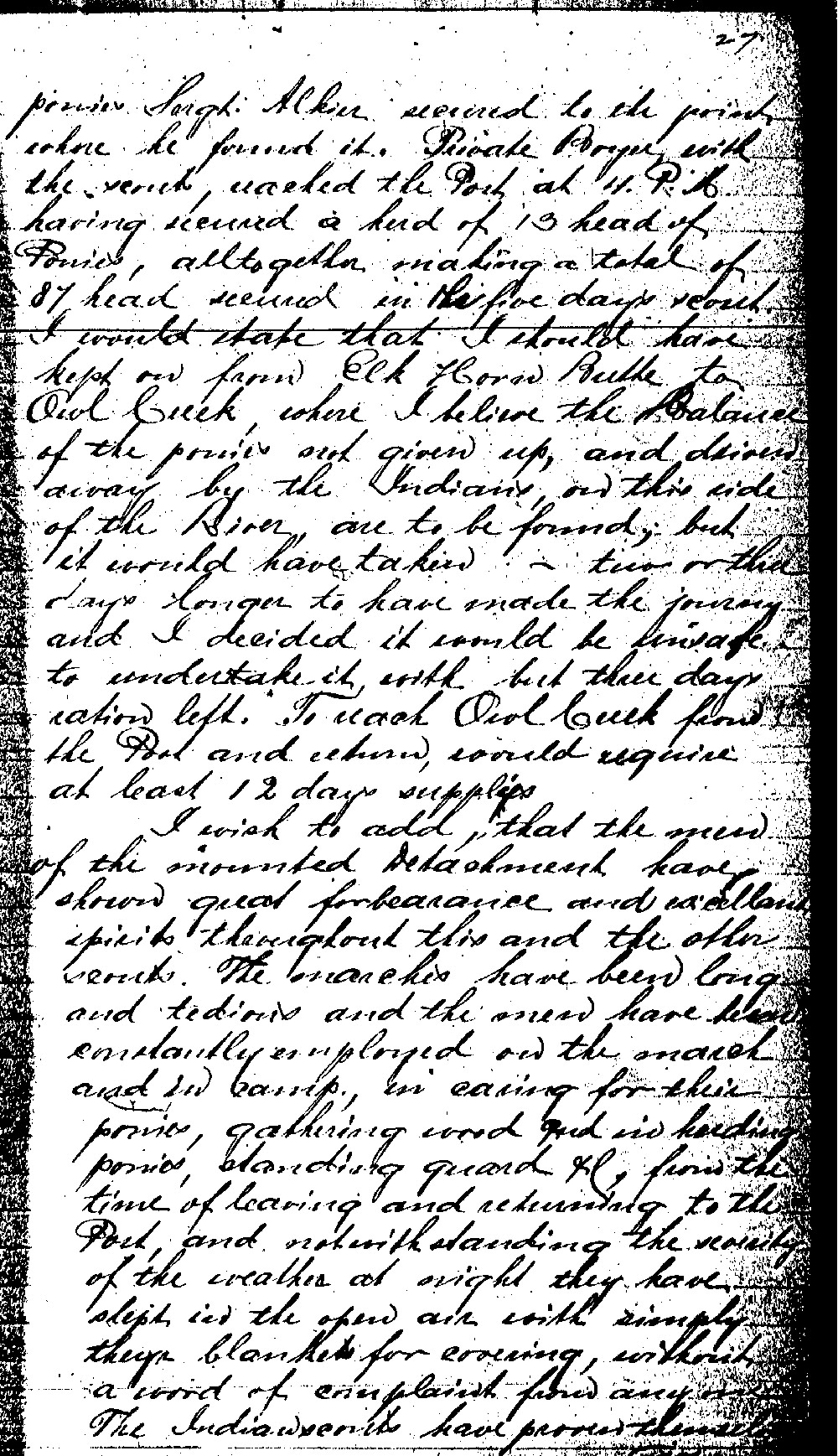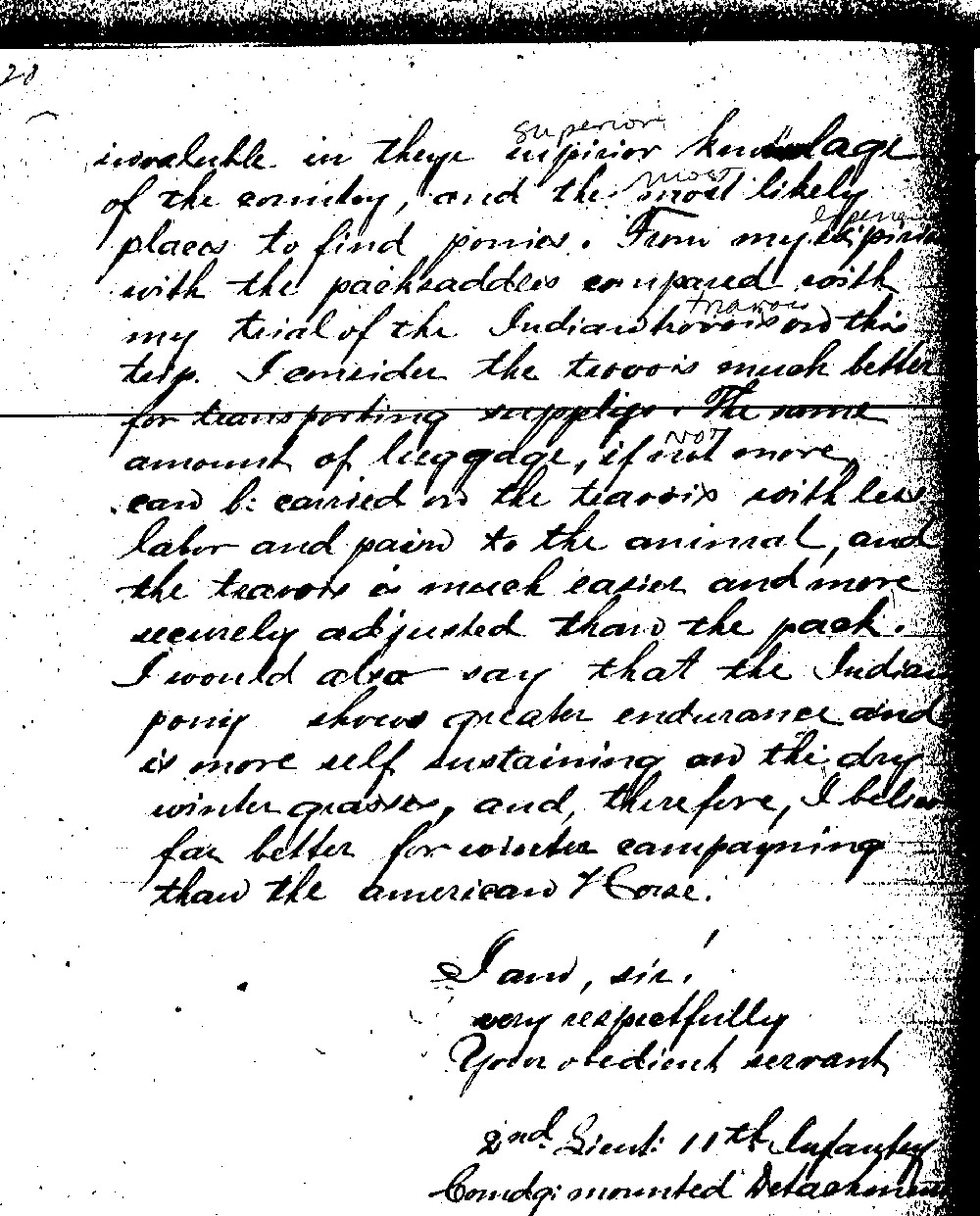In 1866, following the end of the Civil War, Congress re-organized the Army. One sentence of the re-organizing act authorized the enlistment of American Indians to serve the Army as Scouts.
In Dakota Territory, both the Dakotas and ArikarasThe Arikaras (they call themselves Sahnish) came from the land now known as the state of Iowa. By the early 19th century they had moved north along the Missouri River as directed by their holy spirit, Chief Above (Neesaau ti naacitak Ux.) Lewis and Clark saw three villages of about 3,000 people at the mouth of the Grand River (northern South Dakota) in 1804. By the 1830s the Arikaras lived near Fort Clark along the Knife River. The Arikara were devastated by the small pox outbreak of 1837. In 1856, small pox again struck their villages. The Arikara, weakened by disease and threatened by Dakotas, joined the Hidatsas at Like-A-Fish-Hook village in 1862. Like the Hidatsas, they were farmers who lived in earthlodges. The Arikaras were often called Arikarees or Rees by white explorers and the Army. were recruited to enlist as Scouts. These two tribes had a long history of both friendship and war with each other. (Document 9.)
U. S. Military Station
Standing Rock, D. T.
November 18, 1875
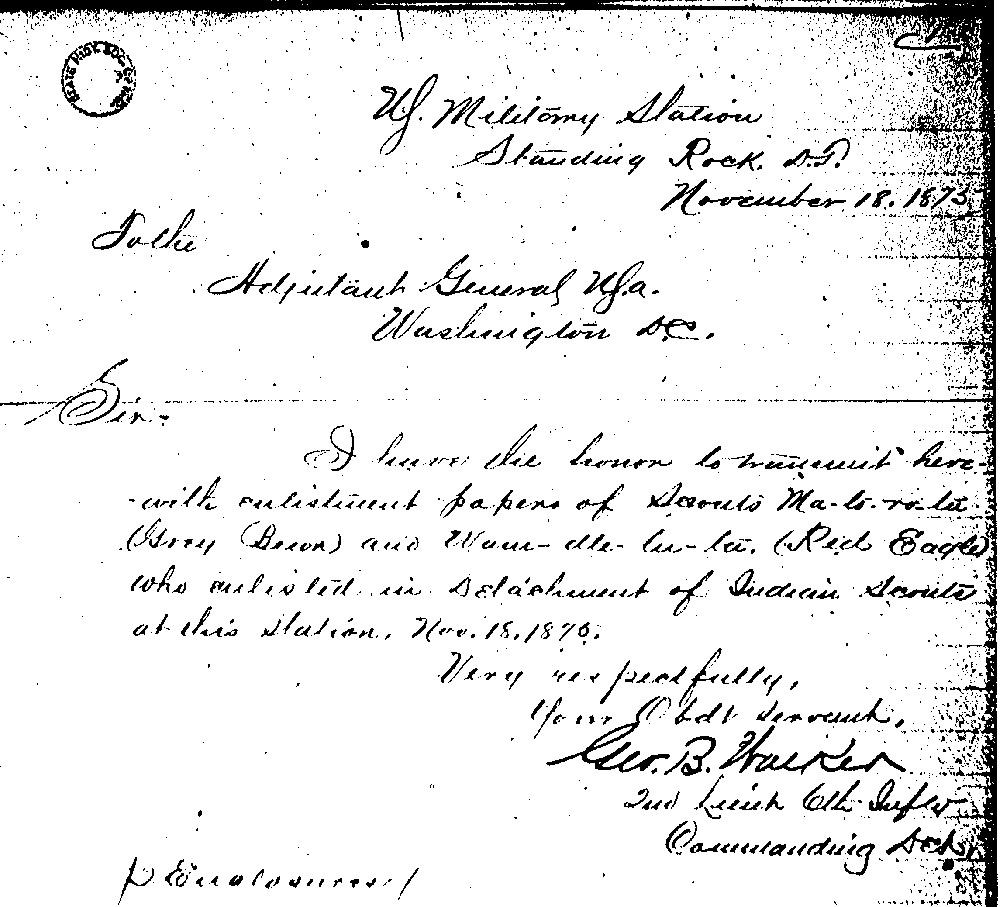
To the
Adjutant General U. S. A.
Washington D.C.
Sir:
I have the honor to transmit here-with enlistment papers of Scouts Ma-to-ho-ta (Grey Bear) and Wam-ble-lu-ta (Red Eagle) who enlisted in Detachment of Indian Scouts at this station, Nov. 18, 1870.
Very Respectfully,
Your Obdt. Servant,
Geo. B. Walker
2nd Lieut. 6th Infry
Commanding Det.
Enclosures
SHSND MSS 20590
In 1866, three civilian representatives of the federal government approached the leaders of the Mandans, Hidatsas, and Arikaras, who shared a reservation, to ask for land on which to build a military post. The tribes agreed. The next spring, when Fort Stevenson was under construction, the commanding officer invited the Arikaras to enlist as Scouts. Red Dog and Tall Bear were sent to the Arikara village with gifts of hard tack (large crackers), bacon, coffee, sugar, and some beef. They were to hold a feast where they were to invite their guests to enlist as Scouts.
Fourteen men who were responsible for keeping the peace in White Shield’s village attended the feast.The men at the feast were Soldier, Red Dog, Big Star, Dog’s Backbone, White Ghost, Ree Chief, Elk Head, Bull Head, Red Elk, Charging Bull, Two Bears, Tall Bear, Only Brave, and Peter Beauchamp. At the feast, Red Dog and Soldier told the other men, “We will fare like other soldiers, food, pay, and lodging, and we go with this understanding.” The men discussed the proposal and agreed to enlist.
The next day, the 14 men traveled to Fort Stevenson. The Arikaras were examined by the Army doctor to make sure they were healthy. All 14 of the Arikaras enlisted for 6 months of service as Scouts. Many of them would re-enlist several times.
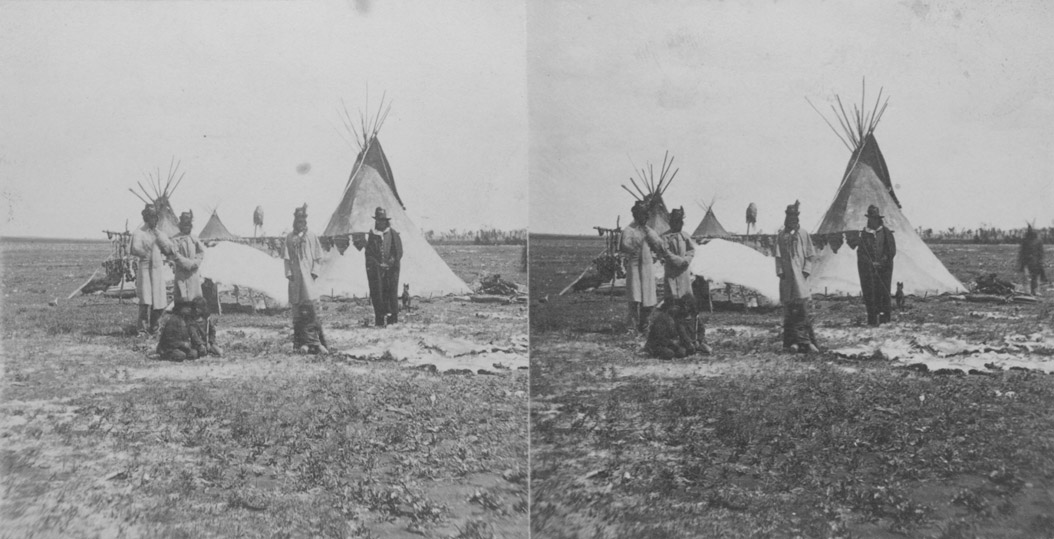
The new Scouts received underwear, a suit of clothes, a hat with a feather, a flannel shirt, a pair of shoes, and a blue cape. The clothes were very similar to those worn by Army privates. They were also given breech-loading rifles, cartridge belts, and bags for extra ammunition. Bull Head was made sergeant in charge of the Scouts. He had three stripes on his uniform sleeve.
The Army issued tin plates, cups, iron kettles, and a camp stove or oven. With their tents, they were prepared for living near the post instead of at home. Each Scout received rations including hard tack, salt, bread, flour, bacon, sugar, tobacco, tea, beans, peas, hominy (corn), and succotash.Succotash was originally a mixture of corn and beans prepared by Narragansett Indians in the northeastern part of North America. They called it msíckquatash. English settlers adopted the food and changed the name a little. Succotash was, however, unfamiliar to the Arikaras. The Army version of succotash consisted of a brick of dried beans and leaves. Once boiled, the leaves appeared to be cabbage. It was nutritious, if not appealing. As a dried food, it was well-preserved for long term storage. The Scouts shared these rations with their families who often joined them in their tents at the post. (See Image 11.)
The Scouts, like enlisted soldiers, had a variety of duties. (See Document 10.)
Standing Rock, D. T.
December 8th 1876
Post Adjutant
Standing Rock, D. T.
Sir!
In obedience to verbal directions as of the Post Commander, I have the honor, respectfully to make the following report of the recent scout and search of Indian ponies made by the mounted Detachment under my command in pursuance of verbal instructions as of the commanding Officer of the 2nd instant [month].
I left this post on the morning of the 3rd instant with my Party, - consisting of Sergeant Atkins, six men of the mounted Detachment and four of my Indian scouts, with six days rations packed on two Indian pony travois. Taking a southwesterly course and camped for the night on Oak Creek distant from the Post about 25 miles & from the mouth of the Creek 50 miles. Next day I took a course nearly due west and reached Stone Wall Creek, at the junction with Grand River about 1 P.M. then marched down Grand River about 15 miles and camped. My scouts, whom I had employed in [thoroughly] examining the Country two or three miles on each side of my line of march, through the valley and from the highest points, returned to camp, shortly after dark and reported a herd of 35 or 40 ponies, within a short distance. At daylight I secured this herd, numbering 35 head, including one good mule, and kept on down Grand River, traveling about 35 miles to Elk Horn Butte, where I went into camp. Early in the morning I sent Sergt. Atkins with one Scout and a Soldier, down Grand River with directions to go about 10 miles than [then] strike across to Oak Creek and follow up the Creek until he met me, and with my main Party. I started across to Oak Creek aiming to strike a point on a small Creek tributary to Oak Creek, where one of the scouts thought a herd of ponies were likely to be found. At this point I found a herd of 10 head and then continued on to Oak Creek and camped, - having travelled about 30 miles. Sergt. Atkins did not join me here and I concluded he had struck and followed on trail of ponies. Next day the 7th instant [this month] I sent Prvt. Boyer with 2 scouts with orders to follow down Oak Creek 7 or 8 miles and then strike across to Standing Rock, and with the rest of the Party I started into the Post. On the way I found 5 head of Ponies and reached the Post, with 50 head about 2 P.M.
Sergeant Atkins with his party the day before had found a fresh trail of ponies about six miles from Elk Horn Butte, and followed it to within 20 miles of the Post. When he secured 24 head, and having no sheltered Place or wood near at hand, he took fresh horses from the herd and kept on until he reached this post. This herd, by the way, were found in the same valley where I secured 7 Ponies on the scout to Grand River and had evidently been driven there within a day or so, under the belief they would be safe, from the fact that I had once searched that Part of the Country. I should have stated that the day following the finding of the herd of 35 near Grand River the scouts informed me they had found one Indian, riding a branded pony, just going into the herd as they discovered it, that he had just come out from the agency evidently with the intention of running the herd off. That they gave the Indian a good scare by telling him, if he did not make quick tracks back, I would catch him, that the Indian begged hard for a fresh Horse, to return with, which they would not give him. The scouts have not given me any satisfactory answer for their hiding this matter from me so long, and I cannot understand their motive for secrecy and allowing the Indian to escape. They seem to consider it a matter of no importance, so long as we had secured the ponies. In all probability the same Indian ran the herd of ponies Sergt. Atkins secured to the point where he found it. Private Boyer with the scouts reached the Post at 4 P.M. having secured a herd of 13 head of Ponies, altogether making a total of 87 head secured in the five days scout. I would state that I should have kept on from Elk Horn Butte to Owl Creek, where I believe the balance of the ponies not given up, and driven away by the Indians, and this side of the River, are to be found; but it would have taken . . . two or three days longer to have made the journey and I decided it would be unsafe to undertake it with but three days rations [food] left. To reach Owl Creek from the Post and return, would require at least 12 days supplies.
I wish to add, that the men of the mounted Detachment have shown great forbearance and excellent spirits throughout this and the other scouts. The marches have been long and tedious and the men have been constantly employed on the march and in Camp, in caring for their ponies, gathering wood and in herding ponies, standing guard etc, from the time of leaving and returning to the Post, and notwithstanding the severity of the weather at night they have slept in the open air with simply their blankets for covering, without a word of complaint from anyone. The Indian scouts have proved themselves invaluable in their superior knowledge of the country, and the most likely place to find ponies. From my experience with the pack saddles compared with my trial of the Indian travois on this trip I consider the travois much better for transporting supplies. The same amount of luggage, if not more can be carried on the travois with less labor and pain to the animal, and the travois is much easier and more securely adjusted than the pack. I would also say that the Indian pony shows greater endurance and is more self sustaining in the dry winter grasses, and therefore, I believe, far better for winter campaigning than the American Horse.
I am, sir!
Very respectfully
Your obedient servant
[unsigned]
2nd Lieut. 11th Infantry
Comdg: mounted Detachment
SHSND MSS 32064
The Scouts were paid $16 per month. If they provided their own horse, they received an additional $12 per month. Soldier spoke of his joy when he was first paid. He said, “What first took the heart out of my body was the sight of the green paper money in my hands.” The money could be used to buy food, tobacco, cloth and other goods at a traders’ store.
In 1874, Colonel George A. Custer recruited Arikaras for the expedition to the Black Hills. Custer’s assignment was to learn more about the Black Hills which the Dakotas considered to be their sacred homeland. He was also to learn more about the gold deposits that were rumored to be in the Black Hills. Young Hawk was one of the Arikara Scouts on the Black Hills expedition. He enlisted at the age of 17 and served just as his father had. Young Hawk remembered that one day during the expedition, Custer approached him with “something concealed in his hands.” He placed a heavy, yellow nugget of gold in Young Hawk’s hand. Then Custer sent the Scouts into the hills to find more of it.
Word of gold deposits in the Black Hills reached cities and states to the East. Soon the Black Hills filled up with prospectors and miners. Two years later, in June 1876, the Dakotas (with their allies, the Cheyennes) met the Army in battle on the Little Big Horn River in Montana. On that expedition, the Arikara Scouts performed their duty of trailing and locating the Dakotas, and capturing or stampeding Dakota horses.
Many years after the Battle of the Little Big Horn, in 1912, the men who had once been Arikara Scouts, came together to tell their story. They also formed an organization called the U. S. Volunteer Scouts and established two posts on the Fort Berthold Reservation. This organization brought the former scouts together to tell their stories and honor those who had served in the U. S. Army Scouts.
Why is this important? The history of the Indian Scouts tells us that the battles for the Great Plains were not simply a matter of whites versus Indians. Different tribes chose different ways to deal with growing white settlement and the presence of the Army in Dakota Territory. The Arikaras chose to work for the Army and to earn some income which was useful in acquiring the goods that their families needed. The Dakotas served as Scouts from time to time, but they also chose to resist the federal government’s taking of their homelands.



